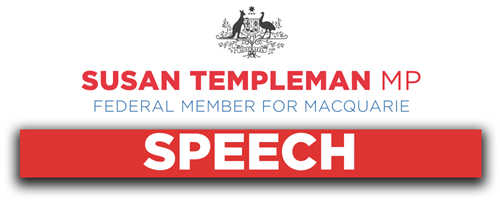
I want to start by addressing some of the issues that have been raised in this chamber by the former minister for the arts, the member for Bradfield. There's this rhetoric going through those opposite that the large additional funding that this Albanese Labor government has provided to the arts is somehow not going to end up with artists themselves. Right from the start, let's get some facts straight about how funds have been distributed traditionally by the Australian Council. Let's look at their track record.
The Australia Council will, of course, be known as Creative Australia under our changes. In the last financial year, the Australia Council invested 95 per cent of its budget back into the arts sector, with just five per cent spent on overheads and operational costs. That is 95 per cent of the funds going to artist and projects. The planned increase in staffing levels that is going to be included in the way we move forward is because the arts sector has asked us to do more. The sector has asked the government to provide more to it. In order to manage that, you obviously need to have a few more people to help do it. But if you look at the percentages, we don't see any reason why the percentage difference will change, and that's one of the fundamental things about the efficiency of the way the arts sector works.
In our national cultural policy, we're very proud to be providing more funding and more direction for the arts sector, knowing how efficiently this organisation to be known as Creative Australia will work. I think it is also really important to point out a key change in the significant increase that we are providing to funding. There is an additional $949.5 million being invested over the next four years in the arts sector. One of the key things we are doing is making sure that the decisions about which artists and which arts projects get funded are going to be made independent of the minister. Instead they'll be made by the Australia Council and Creative Australia, not the RISE Fund that those opposite instigated where funds were taken away from the independent decision-making process, and which projects were funded was in the lap of the minister, depending on the minister's preferences.
When we talk about additional funding, we also know that we are bringing back integrity, the integrity that the arts sector knows and appreciates. Those opposite can roll their eyes about it, but we know this system has been supported over decades by governments of all colours until just recently, and so we are very proud to see that sort of change come in. This record new investment in the sector is going to safeguard our national institutions. It will train and support creatives, and it will deliver on the vision of our new National Cultural Policy—Revive. We've really set a new course for the sector that builds on the proud legacy of previous governments. We're bringing back drive, direction and vision to a $17 billion industry that employs more than 400,000 Australians so that we are empowering talented artists and organisations to thrive and grow.
When we look at the breakdown of that funding, $535.3 million is to secure the future of our most cherished cultural and historical institutions, things like the National Gallery, the National Library, the Film and Sound Archive and the National Archives. They have a crucial place in our cultural history and in our future. There is also $33 million to secure the long-term viability of the National Library's Trove database, and I am sure every one of us has constituents who use that database for family history, but it is also a key academic resource. There is $286 million to deliver on Revive, including establishing Creative Australia, Music Australia, Writers Australia and a creative workplaces centre, which is what arts workers have told us they want. It's also for establishing a First Nations led body dedicated to First Nations work. There is also $9.3 million for Australia's eight national arts training organisations, and I've met with leaders of all of these organisations. These are the sorts of investments in skilling up Australians for this sector that have been neglected for a decade, and we are taking seriously the rebuilding of our very vital arts sector.


